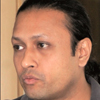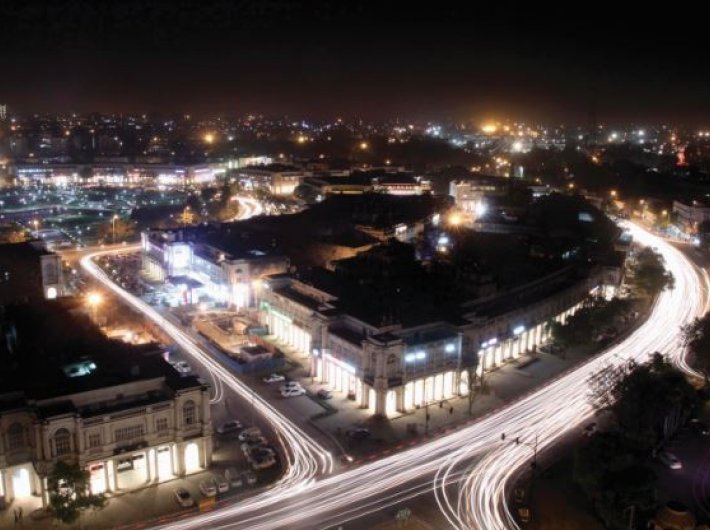To truly understand the potential of quantum urbanism for solving real world problems, it’s necessary to get the intellectual architecture right and the first principles of the quantum world clearly charted out
To get to a point where anything quantum must move from a theoretical possibility to an applied end state requires the use of bizarre props where every leap of logic is also a leap of faith. It stands steadfast even when the intent is to prove the sheer absurdity of it all. Austrian physicist Erwin Schrödinger used an imagined cat for a thought experiment with an intent to prove that quantum superposition is absurd. The Copenhagen Interpretation of quantum superposition posits that everything in the universe exists in multiple states simultaneously till the point they are observed. Through his cat and few other imagined deadly substances like radioactive material and poison, Schrödinger wanted to highlight that his imagined cat is dead and alive at the same time, a superposition which for all practical purposes is patently absurd.
What Schrödinger ended up doing, ironically, strengthened the theoretical framework of quantum superposition at the subatomic level resulting in a new concept of quantum entanglement that informed the highly popular randomness and chaos theory of Nassim Nicholas Taleb. Since quantum entanglement posits that no matter what the distance, particles connected to each other cannot be described independent of the others. This brought to the fore a new question. When and where does classical world of macroscopic objects end and when and where does the quantum world of microscopic elements begin? A derivative of this fundamental question underpins quantum urbanism. When and where does classical urbanism of closed systems end and when and where does quantum urbanism of open connectedness begin?
Quantum urbanism like quantum physics is more cascading rushes of an unpredictable surrealist noir film and less stock screenplay of a predictable popcorn classic. If this sounds suspiciously poetic and unscientific in the way we understand poetry, science and social sciences today, then let me put to rest all such speculations and say it is so, and deliberately so. I am not a particularly good poet. In fact, I am reasonably unpoetic as my numerous dalliances with verses suggest. Nor do I want to impress one and all with my wordsmithing abilities. In fact, I readily admit that there are others of superior pedigree and vintage. My resort to an analogy represents a real dilemma of how to adequately articulate the counterintuitive nature of the theories that inform the quantum world. It’s a dilemma that I share with several people who are certified legends. It’s best to use Werner Heisenberg’s words to express my dilemma. After numerous attempts at explaining the shocking discoveries of the nanoworld, the German physicist said: “Quantum theory provides us with a striking illustration of the fact that we can fully understand a connection though we can only speak of it in images and parables.” That’s because the quantum world is cheese to our conventional world’s chalk. Heisenberg should know for his principle of uncertainty and indeterminacy underpin some of the most profound theoretical insights into the quantum world.
Another way to understand the quantum world is to peg it to what it is not to the classical world. The boundaries of the classical world don’t apply to the quantum realm whose outer fringes and signposts are still being discovered. Boundaries impose limitations by providing a framework of possibilities. The limits of the classical world are best understood by unpacking an idiom rooted and nurtured in that soil. There is an old world saying that the proof of the pudding is in eating it. It is also a cliché used with unacceptable regularity to celebrate the classical worldview that puts a premium on the material manifestation of an idea as the ultimate representation of reality. Idioms are densely compacted capsules compressing generational layers of common sense dished out as pills of instant wisdom. The keywords here are common and sense. Coming back to the idiom with which we started, the pudding is as fundamentally common as it gets and eating is as human a sense that one can expect. Peeling the layers of the idiom reveals a core that powers every norm and rule of the classical world, with the idiom being just a tiny cog of an entire wheel. That core is rooted to the principle of certainty. This principle informs every single aspect of the classical world from idioms to scientific experiments, where the justifiable need for proof and evidence is almost always reduced to measurability and a material manifestations. In short, reality is real only if the real can be made to appear in a physical form.
The core principle powering the quantum world is uncertainty. The nature of uncertainty is such that it will always lead to a set of probabilities and emergent possibilities. In short, uncertainty will never allow any fixed boundaries to be drawn, always silently gravitating towards lines drawn in sand that can be drawn and redrawn depending on the what is being observed and who is observing it. This principle goes against almost everything that classical world offers, whose neatly packaged modules of certainty and absolute mathematical limits were succinctly and insightfully summarised by Albert Einstein as thus: “I am convinced that He [God] does not play dice.’’ As things stand today, with no limits yet in sight for the quantum world and with a team from the Russian Quantum Centre quite pointedly proving through an experiment with light waves that Schrödinger’s Cat can be both dead and alive at the same time, uncertainty, entanglement and the lack of absolute mathematical limits is the new normal coexisting with the old one.
If I were to try and summarise it as a principle it is but a certainty, an ironic state to be in, that I would sound like a horrible charlatan and positively ‘unEinsteinian’. But one cannot fault physicist Stephen Hawking and he actually summarised it thus: “Not only does God play dice but he sometimes throws them where they cannot be seen.” All of this should have made you giddy and quite not sure about some closely held scientific beliefs, facts and truths. Niels Bohr, Danish physicist and one of primary movers of the Manhattan Project that delivered humankind its first atomic bomb, once completely drained and exhausted after months of intense work on quantum theories wryly observed, “If anybody says he can think about quantum physics without getting giddy, that only shows that he hasn’t understood the first thing about them.”
On that note, despite its meta characteristics and an exceeding fondness for theories, analogies and abstractions, there are six clearly identifiable principles of the quantum world. The principles are: Particles are waves and waves are particles. Quantum states are discrete. Probability is all we will ever know. Measurement determines reality. Quantum co-relations are non-local. Everything not forbidden is mandatory. These principles are equally applicable to the world of quantum urbanism. All one must do is replace particles and waves with emotions and intelligence. Both human, of course. It’s here that one must always remember another of Niels Bohr’s gems about the quantum world that’s more applicable, if not equally, to the realm of quantum urbanism. It sounds spiritual but it’s as real and material as it can be. Everything we call real is made of things that cannot be regarded as real. Now, that’s a good starting point to explore quantum urbanism in action. |
Next: Quantum urbanism in action: Transforming jobs into work & why it’s good for us and the earth
Swaminathan is visiting research fellow at Uppsala University Sweden where he is part the project ‘Future Urbanism’. He is also research director of the Centre for Social Impact and Philanthropy, Ashoka University.
(The article appears in the August 16-31, 2017 issue of Governance Now)

